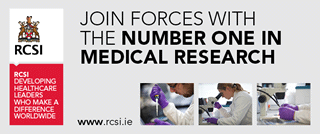New research to help detect oesophageal cancer earlier
A new method to help diagnose oesophageal cancer is being researched by engineers and physicians at the Institute of Biological and Medical Imaging at Helmholtz Zentrum München.
The hybrid optical and optoacoustic endoscope for oesophageal tracking (ESOTRAC) research project has engineers and physicians working together to develop a hybrid endoscopic instrument for early diagnosis and staging of oesophageal cancer.
The device could potentially reduce the number of unnecessary biopsies and help detect signs of the disease earlier. In turn this will lead to an earlier start to therapy, improving therapeutic efficacy over late-disease treatment and provide cost-savings for the healthcare system.
The project has been awarded €4 million from Horizon 2020, the EU programme for research and innovation.
Oesophageal cancer is the sixth leading cause of cancer-related deaths. Over 450,000 new cases are diagnosed per year and the disease carries a five-year survival rate of only 10% when diagnosed late.
The disease is currently detected using white-light endoscopy or random tissue biopsies. These are followed by histopathological analysis of excised tissue. Due to limitations of the current detection methods, oesophageal cancer is typically detected at an advanced stage which is treated surgically but attains poor survival rates.
The device ESOTRAC aims to develop is an endoscope, combining sensing of pathophysiological tissue signatures resolved by multi-spectral optoacoustic (photoacoustic) tomography (MSOT) with morphological disease signatures provided by optical coherence tomography (OCT).
The device will visualise sub-surface tissue features and provide superior information of the oesophageal wall compared to conventional video endoscopes. The device will allow for rapid 3D imaging of the entire oesophageal wall as well as quantitation of disease biomarkers.
Professor Vasilis Ntziachristos, ESOTRAC Coordinator, director of the Institute of Biological and Medical Imaging at Helmholtz Zentrum München and professor and chair of Biological Imaging at the Technical University of Munich said: “The combination of MSOT and OCT can shape the way physicians look at the oesophageal in the near future.”
Professor Rebecca Fitzgerald lead physician at the MRC Cancer Unit at the Cambridge Biomedical Campus in the UK, one of the ESOTRAC partners said: “From a clinical perspective we desperately need new technologies that improve imaging and combine information on molecular markers for early detection of disease and this research is trying to do exactly that.”







